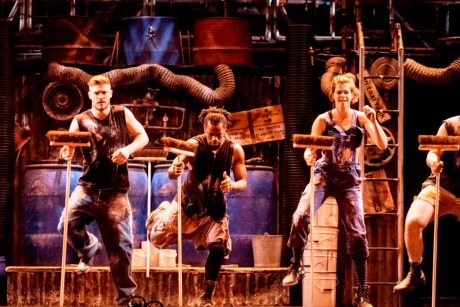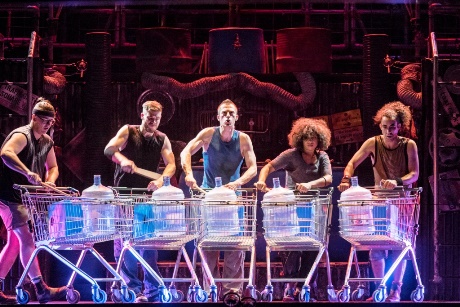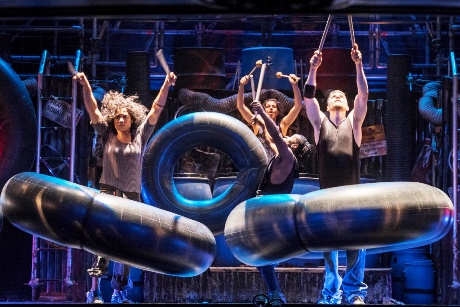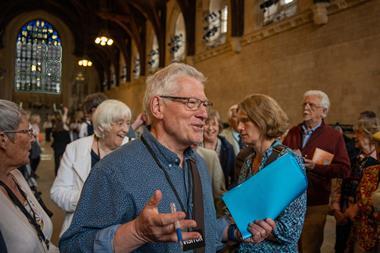
A crazed cacophony of bin-banging, stick-clanging, dustbin-lid smashing, plastic-bashing, metal-scraping glory: the West End run of Stomp shows no sign of slowing (or quietening) down, says Rachel Bailey.
When a show has been running in the West End for a number of years, it’s often easy to overlook buying tickets for it in favour of flashy new openings and glitzy show debuts. I’m ashamed to say that it’s for this very reason that until now, I hadn’t seen Stomp, despite that fact that it’s been running in London for 15 years.
The show has just announced another extension, taking the booking period up until April 2018. It’s been in existence since 1991, making it just a year younger than I am, so I was intrigued to find out why it’s still proving incredibly popular with audiences from both the UK and overseas.
What is Stomp? You might know it as ‘that show where they play bins’. And you wouldn’t be wrong; there’s certainly plenty of bins in it.

But it’s much more than a noisy celebration of waste containers. Stomp is a masterpiece of synchronisation between eight performers, and is incredibly satisfying to watch. It is a 100 minute-long performance made up of different percussion acts. The body and ordinary objects are used to create a physical theatre performance that builds to a dramatic and thunderous climax (that I can only imagine the neighbouring West End theatres must find an absolute nightmare).
Examples of the different acts include the cast bouncing basket balls in an intricate rhythm across the stage; smashing shopping trollies together to create a glorious rhythm; and clattering metal bin lids together in an impressive display of choreography.
Other highlights see some of the cast harnessed inside giant black rubber rings and ‘playing’ these rings with wooden sticks. Another impressive scene sees all the stage lights go down so that a marvellous display of numerous lighter flames flickering in different patterns is all that can be seen by the audience.
Add to all this the fact that the entire set is in itself an instrument (the walls are covered in the likes of pots, pans, road signs and hubcaps used for making all sorts of noises) and it’s easy to see why Stomp is still pulling in spectators.

I did wonder prior to seeing this show how the audience would remain engaged from start to finish. I’m the kind of audience member who is the most engaged in a story when I can find similarities between myself and the characters, or relate to a particular plot line.
In Stomp’s case, there is no plot, no characters in the traditional sense, no dialogue even – but viewers seemed hooked all the way through. A repeated audience participation task involving a lot of hand clapping definitely helped with this, too.
Do go and see Stomp; it’s good fun, and a great alternative for those seeking something completely different to the usual West End ‘act one, act two’ set up. Note that there is no interval in this show.
Discounts for groups are available; group organisers can call 020-7395 5405 for more details.
For more information, visit www.stomplondon.com.
Lead image photo credit: Steve McNicholas.












